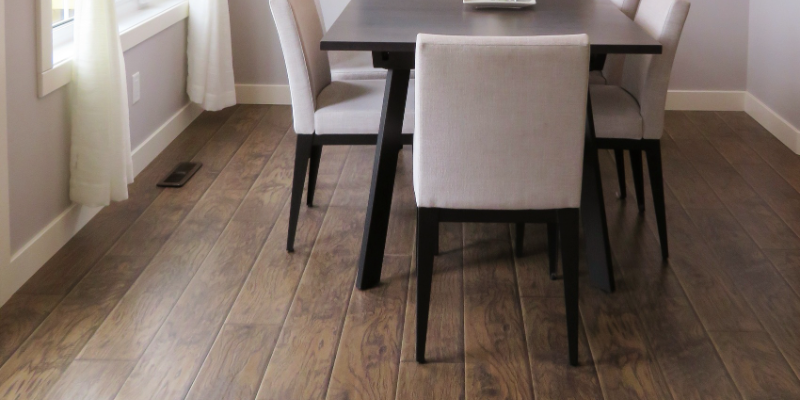Hybrid timber flooring is a combination of wood and concrete. This type of flooring has become very popular because it combines the durability of concrete with the warmth of natural wood. The benefits include increased energy efficiency, lower maintenance costs, and reduced noise levels.
This article provides answers to these questions and more.
Types of Hybrid Flooring – Wood Plastic Composite Flooring & Stone Plastic Composite Flooring
It is important that you understand the differences between the two types of flooring so you can make an educated decision when buying them.
Stone plastic composite (SPC) hybrid flooring has several different components, including a UV coating, a printed surface, an SPC core (limestones core), and a balancing layer.
Wood-plastic composites (WPCs) are composite materials made of wood fiber/wood flour and thermoplastic(s) such as polythene (PE), polypropylene (PP), polyvinyl chloride (PVC), or polylactic acid (PLA).
What are hybrid floor pros & cons
In recent years, hybrid flooring has become increasingly popular due to its durability, low maintenance costs, and ease of installation. However, these benefits come with several drawbacks.
Pros
- Hybrid floors are durable. They are resistant to scratches, stains, and moisture. This makes them ideal for areas such as kitchens, bathrooms, and basements.
- Hybrid floors are easy to install. They require no special tools or expertise. Simply lay down the tiles and secure them using adhesive strips.
- Easy To Clean – Hybrids are easier to clean than solid surface floors. This makes cleaning easier and faster.
- Low Maintenance – Hybrids are low maintenance. They don’t require regular waxing or polishing.
Cons
- Hybrid floors are expensive. While they offer excellent performance, they cost significantly more than traditional vinyl or laminate flooring.
- Hybrid floors may crack. If installed incorrectly, they can develop cracks.
- Installation takes longer than installing standard flooring. Because of their thickness, hybrid floors cannot be laid directly onto subfloors. Instead, they must first be attached to plywood or concrete.
- Hybrid floors can warp. Over time, heat and humidity cause the surface of the tile to expand and contract. As a result, the floor becomes uneven.
- Hybrid floors don’t last forever. Like any material, they eventually deteriorate over time.
What is the best thickness for a hybrid floor?
A hybrid floor has a typical depth of between 6.5 mm and 8.5 mm, which depends on the type of flooring and the manufacturer of your specific floorboards. Laminate floors come in thickness of 8, 10,12, and 14 millimeters. Solid Surface Floors come in thicknesses of 4, 5, 7, and 9 millimeters.
What are the different styles of hybrid floor?
Hybrid flooring makes use of advanced printing technology, so there are a wide range of styles available that very realistically mimic the textures and looks of different materials including Australian hardwoods, oak timber, tiles, marble, etc. So you have lots of choices when choosing which type of floor to install in your home.
What are hybrid floor alternatives?
Beside hybrid floors, there are other alternatives such as raw engineered floors. At We Love Parquet, RAW Engineered Oak Flooring is your blank canvas to create your dream floor. Install and site colour this wood to get your perfect oak floor colour. This wood is a high grade of European Oak engineered wood flooring, with few knots, and even colour tone. This is a point of difference for those who want a cleaner grade European Oak.
Need help to decide which floor will work best for you?
At We Love Parquet, we are experts wood flooring & can give you the best advice to meet your requirements. Call or email us to speak to an expert now!

